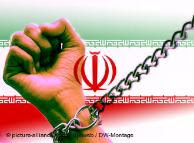First Online: January 08,1998
Page Last Updated: June 15,2010
India's First War of Independence, termed Sepoy Riots by the British was an attempt to unite India against the invading British and to restore power to the Mogul emperor Bahadur Shah. The resistance disintegrated primarily due to lack of leadership and unity on the part of Indians, as also to cruel suppression by the British Army. It was a remarkable event in Indian history and marked the end of the Mogul empire and sealed India's fate as a British colony for the next hundred years.
Conditions
Indians working for the British Army, due to their deep traditions and faith faced numerous social barriers. In 1856 it was rumored that additional troops were to be recruited for service in Burma, where they could not follow all their religious rules, and that Christian missionary efforts among the troops were to receive official encouragement. The Zamindars (land owners) of the time wanted to protect their interests in the wake of land reforms by the British and funded anti-English activities.
The insurrection was triggered when the British introduced new rifle cartridges rumored to be greased with oil made from the fat of animals. The fat of cows was taboo to Hindus (see: Holy Cows) while Muslims were repelled by pig fat.
Violence
The violence started on May 10, 1857 in Meerut, when Mangal Pandey, a soldier in the Army shot his commander for forcing the Indian troops to use the controversial rifles. Indians constituted 96% of the 300,000 British Army and the violence against British quickly spread (hence the name Sepoy Mutiny). The local chiefs encouraged scattered revolts in hopes of regaining their lost privileges.Siege of Delhi
Bahadur Shah II, by now the pensioned descendant of the Mogul dynasty, was popularly acclaimed as the leader of resistance. On June 8 a British relief force defeated an army of mutineers at Badli Sari and took up a position on the famous ridge, overlooking the city of Delhi. Nominally the besieging force, they were themselves besieged by the mutineers, who made a daring attempt to intercept their train. The arrival of more British reinforcements finally led to the defeat of the mutineers by John Nicholson, commander of the relief force. After six days of street fighting, Delhi was recaptured. This action was the turning point in the campaign and is known as Siege of Delhi. Bahadur Shah was captured and was exiled to Burma.Corbis-Bettmann
The Attack of Mutineers, July 30, 1857
"One of their leaders waving his sword, shouted 'Come on my braves!"
Illustration from London Printing Company Limited
British Take Control
In spite of the loyalty of the Sikh troops, conquered only eight years before, and of the Gurkhas, the British commander, Sir Colin Campbell, had a difficult task. In addition to quelling the disturbance, he also had to protect the Ganges Valley and all of Hindustan against possible attacks from central India, to the south. Forces were dispatched from Madras and Bombay. However, the revolt had quickly spread to Kanpur and Lucknow. Kanpur, a city controlled by British on the Ganges 250 miles southeast of Delhi, surrendered to the Indian soldiers on June 28, 1857, and was the scene of a massacre before it was recaptured by the British on July 16. Lucknow, forty-five miles to the northeast, had been immediately besieged by the mutineers and was relieved by Henry Havelock's troops on September 25, five days after the final reoccupation of Delhi, the other chief center of the mutiny. However, Havelock's forces, even when joined by those of James Outram, were not strong enough to disarm and remove the enemy garrison, and they had to be relieved on November 16 by troops under Colin Campbell. The civilians of Lucknow were evacuated, but not until the siege of Mar. 9-16, 1858, had enough British troops massed to defeat the rebel army.
Kamat's Potpourri
Indian Soldiers Being Executed by British Canons
The aftermath of India's First War of Independence, 1858
The final stage of the mutiny took place in central India, which was aroused by a roving band of rebels under the Maratha General Tatya Tope. After his capture and execution in April 1859, the leaderless Indians were soon pacified.
|
|
|
Why the Rebels Failed
-
Many native Indian states, influenced by the example of powerful Hyderabad, did not join the rebels.
-
Sikh soldiers of the Punjab area remained loyal to the British throughout. The Sikhs were a strong, well trained army, who the British had conquered using Indian soldiers.
-
The aging Bahadur Shah was neither a brave general, nor an astute leader of the people
Epilogue
In England, the mutiny proved the last straw on the heavy load of criticism and opposition which the East India Company had carried for some time. In August 1858, by the Act for the Better Government of India, its political authority was entrusted to a secretary of state. In August 1858 the British crown assumed control of India from the East India Company and in 1877 Queen Victoria was crowned as the Empress of India. The mutiny played a pivotal role in Anglo-Indian history. The British afterward became cautious and defensive about their empire, while many Indians remained bitter and would never trust their rulers again.
It was not until the emergence of Indian National Congress and Mahatma Gandhi that Indians re-gathered their momentum for home rule.
See Also
- History Potpourri -- Social and political history of India; includes history of freedom struggle, history of drinking, history of education, dynasties, and religious movements
- Biographies of Gandhi, Bose, Singh, Cama
- Tryst with Destiny
- 1858 Lithograph
- Queen of Jhansi Lakshmibai
- Important Leaders of Sepoy Mutiny







هیچ نظری موجود نیست:
ارسال یک نظر